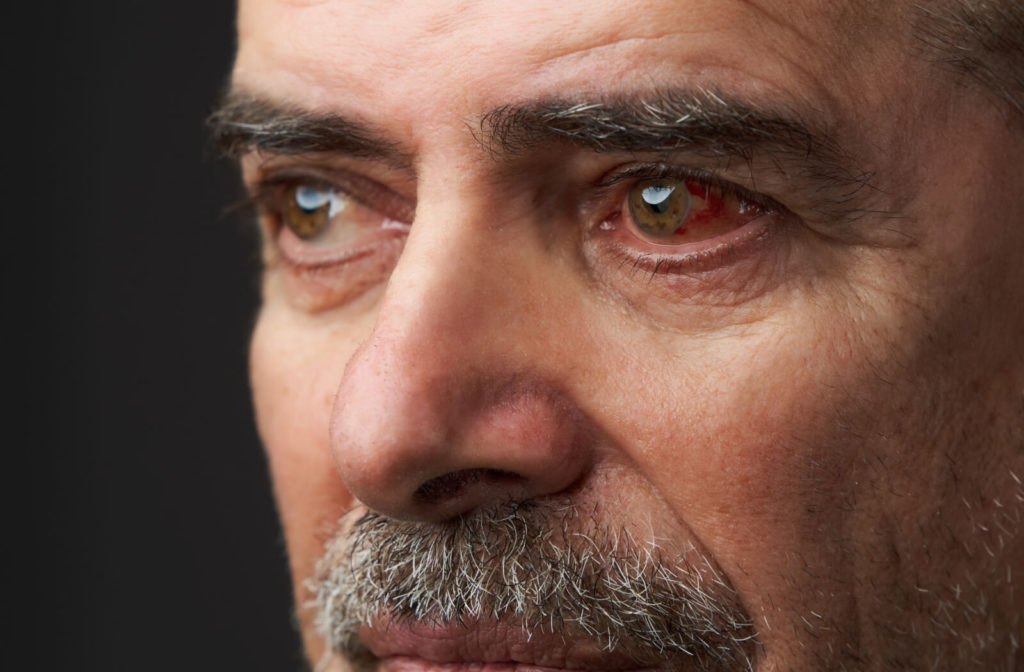If you’re reading this, you might be struggling with dry eye or know someone who is. Dry eye can be a pesky and uncomfortable condition, but it’s important to remember that it’s also a treatable one.
Normally, tears are produced by the eye to reduce friction and maintain clear vision. However, some individuals may not produce enough tears or the tears they produce may evaporate too quickly, leading to dryness and possible vision issues.
Dry eye severity can vary among individuals and if it persists or worsens, it’s important to seek treatment. If left untreated, dry eye can lead to more serious issues, including vision loss.
So if you’re ready to learn more about dry eye and how to take care of it, keep reading!
What Is Dry Eye Disease?
Dry eye disease, also known as dry eye syndrome or keratoconjunctivitis sicca, is a common condition that occurs when your eyes don’t produce enough tears or produce poor-quality tears.
Tears are important for maintaining the health and comfort of your eyes, as they help to lubricate and moisturize the surface of your eye.
Without enough tears, your eyes can feel dry, irritated, and uncomfortable, and you may also experience other symptoms such as:
- Redness
- Grittiness
- Blurred vision
Causes of Dry Eye Disease
There are several factors that can contribute to dry eye disease, including:
- Hormonal changes: Hormonal changes, such as those that occur during menopause, can affect tear production and lead to dry eye disease.
- Environmental factors: Dry, windy, or dusty environments can cause dry eye disease by drying out the tears on the surface of your eye.
- Aging: As we get older, our bodies produce fewer tears, which can lead to dry eye disease.
- Medications: Some medications, such as antihistamines, antidepressants, and blood pressure medications, can cause dry eye disease as a side effect.
- Medical conditions: Certain medical conditions, such as Sjogren’s syndrome, can affect tear production and lead to dry eye disease.

What If I Don’t Treat My Dry Eyes?
Whether you’re experiencing dry eye symptoms yourself or are concerned about a loved one, it’s important to understand the importance of seeking dry eye treatment. If left untreated, dry eye disease can lead to a number of complications, including:
- Eye infections: Dry eyes can increase your risk of eye infections, such as conjunctivitis (pink eye).
- Cornea damage: The cornea, the clear layer at the front of the eye, can become damaged if it doesn’t receive enough moisture from tears. This can lead to vision problems and even scarring of the cornea.
- Trouble driving or reading: If left untreated, the blurriness or double vision caused by dry eyes may get worse, making it difficult or impossible to drive, read, or work.
- Trouble wearing contact lenses: Contact lenses need a sufficient amount of tears to feel comfortable. If your eyes don’t produce enough tears, your contact lenses may become dry and cause irritation, grittiness, and redness.
Dry Eye Treatments
Dry eye disease can often be treated with a combination of lifestyle changes and medications. Some possible treatment options include:
Artificial Tears
Artificial tears are over-the-counter eye drops that can help to lubricate and moisturize the surface of your eye, providing temporary relief from dry eye symptoms. Your eye doctor may also prescribe eye drops that contain medications to improve tear production or reduce inflammation.
Punctal Plugs
Punctal plugs are small silicone plugs that are inserted into the tear ducts to help retain moisture in the eyes. By sealing off the tear ducts, punctal plugs can help to keep moisture on the surface of the eye, reducing dryness and discomfort.
Scleral Contact Lenses
Scleral contact lenses are specialized contact lenses used to treat dry eyes and other eye conditions that cause dryness or discomfort. These lenses have a larger diameter than traditional contact lenses and are shaped like a bowl with a slightly raised center.
They are made of a soft, flexible material that is intended to rest on the sclera or the white part of the eye. One of the primary advantages of scleral contact lenses is that they create a moist environment for the eye’s surface.
Traditional contact lenses can absorb natural tears on the eye’s surface, causing dryness and discomfort. Scleral contact lenses, on the other hand, are inserted into the eye after being filled with a saline solution.
This solution serves as a buffer between the lens and the eye, keeping the eye’s surface moist and comfortable.
Dry Eye Therapy in Solana Beach
Dry eye disease is a treatable condition, but there isn’t a single treatment that works for everyone. If you’re experiencing any symptoms of dry eye, book an appointment with Total Vision Solana Beach.
Our team can help you determine the underlying cause of your dry eye symptoms and develop a personalized treatment plan to help alleviate your discomfort.



